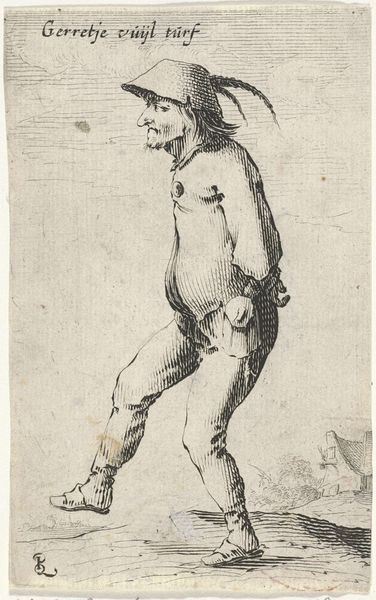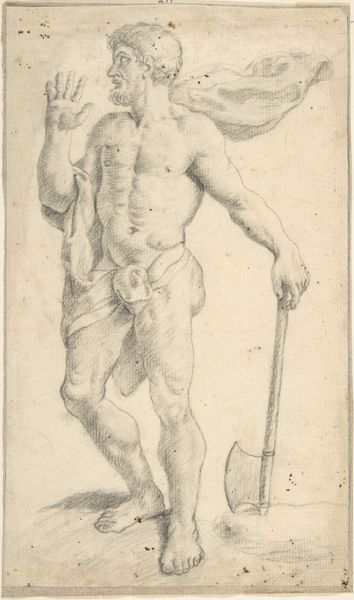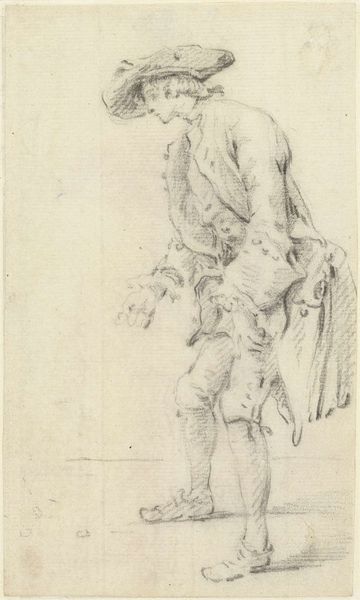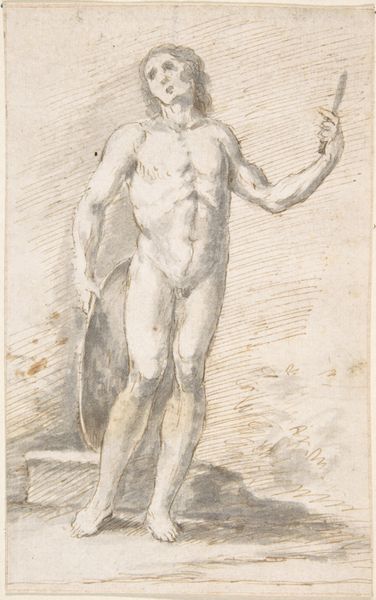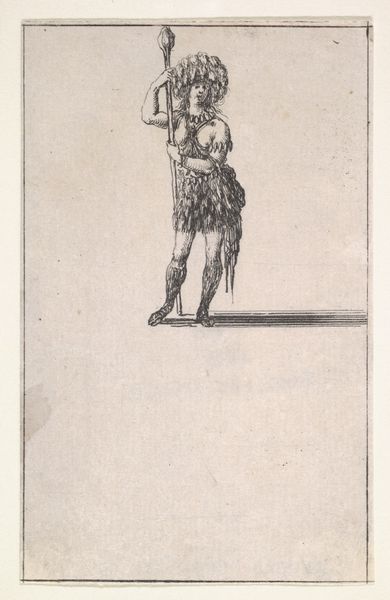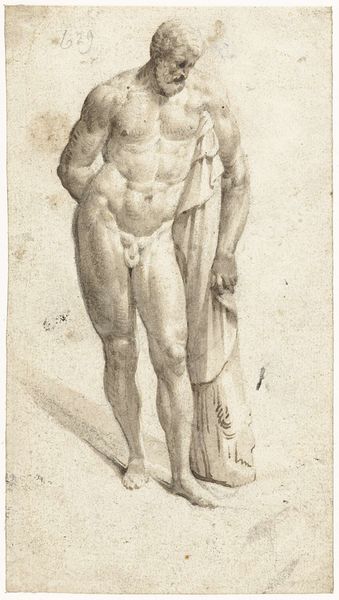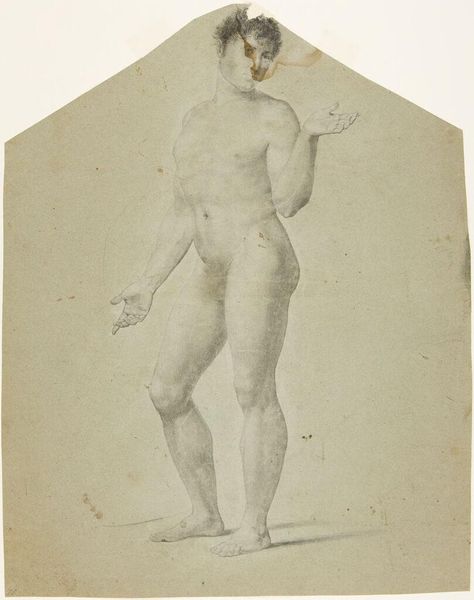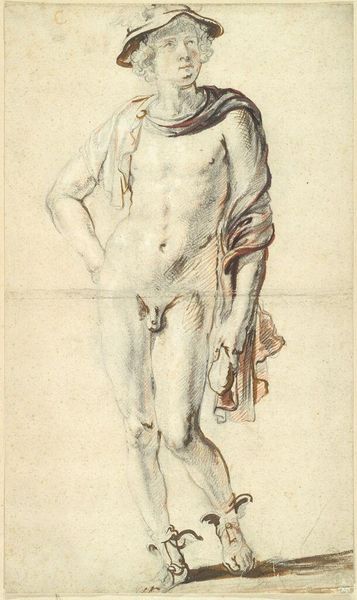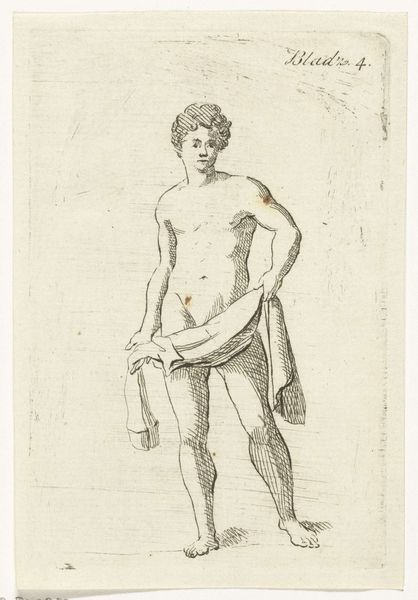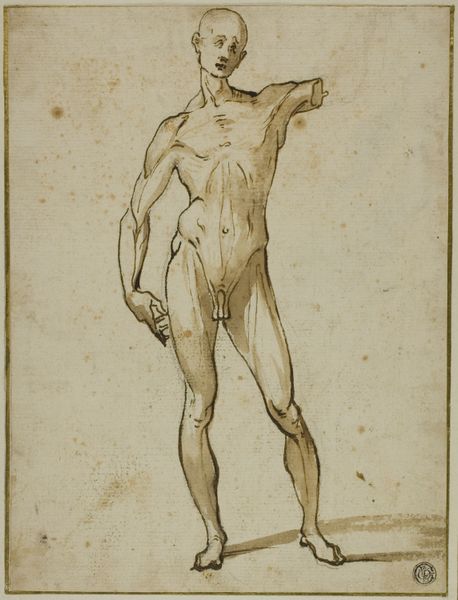
drawing, paper, ink
#
drawing
#
mannerism
#
figuration
#
paper
#
11_renaissance
#
ink
#
nude
Dimensions: height 228 mm, width 147 mm
Copyright: Rijks Museum: Open Domain
Editor: This is Hendrick Goltzius’s “Standing Female Nude” from around 1586-1590, housed at the Rijksmuseum. It's an ink drawing on paper, and I'm immediately struck by the anatomical distortions and the visible process - the lines seem almost aggressively drawn. What stands out to you? Curator: Considering this drawing from a materialist perspective, I am particularly interested in the accessibility and distribution of paper and ink during the late 16th century. The quality of the paper, the specific type of ink used – these details illuminate the economic realities and trade networks of the time. Also, how the relatively widespread availability of these materials contributed to the burgeoning artistic production outside traditional workshop settings. What statement do you think Goltzius is trying to make by using these materials in this way? Editor: I hadn’t considered the economics of it! It's like he is democratizing the nude, by choosing these media, which seem almost… utilitarian. Compared to an oil painting, say. The lines on her thigh though— that’s not something you’d see in nature. Do the techniques of creating that pattern matter too? Curator: Precisely. The choice of hatching, its density and direction, reflects not only an artistic decision about rendering form but also reveals the artist’s labour. What were the prevalent methods of producing paper, and how might Goltzius be challenging, or conforming to, established guild practices? The "mannerist" distortion of form, while aesthetically driven, becomes intertwined with social commentary when considered alongside the means of its creation and dissemination. Editor: So, it’s not *just* the distorted body, but how *that* distorted body was produced and circulated that gives it power? Curator: Exactly! The labor, the materials, the circulation – all contributing to a richer understanding. Now, tell me what this perspective brought to you regarding Goltzius' artwork. Editor: Well, now I see it’s not just about the art object, it’s about everything that went into its creation, and how that all reflects the world at the time.
Comments
No comments
Be the first to comment and join the conversation on the ultimate creative platform.

